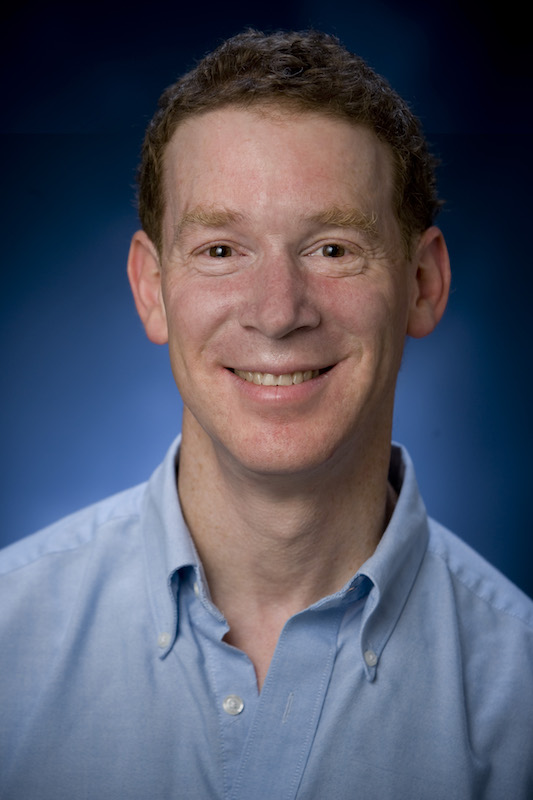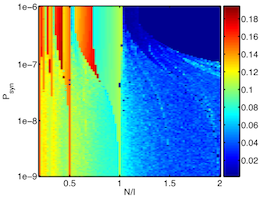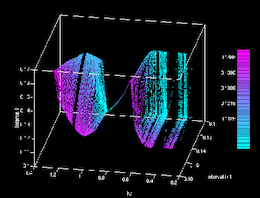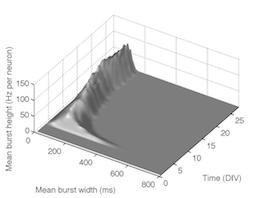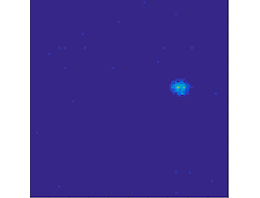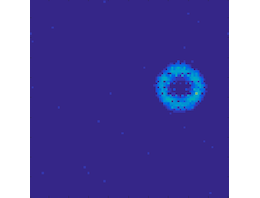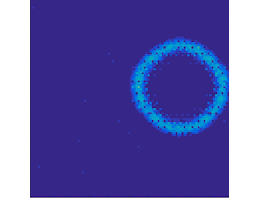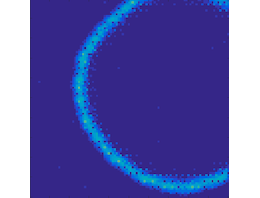Research
My research lies at the intersection of complex networks,
modeling, high performance simulation,
data/metadata/paradata management, and analysis and
visualization. I have applied these interests to problems in
computational neuroscience, cybersecurity, artificial
intelligence, and nonlinear dynamics.
My near-term research focuses on two projects: modeling
of emergency services communications systems (ESCS; 911 in
North America) and modeling of growth and development of
cultures of biological neural networks.
Teaching
As a founding faculty member here at UWB, and a
near-founding-faculty member at HKUST, I have been involved
in the development and teaching of a broad cross-section of
the computer science core, as well as a range of upper-level
undergraduate and graduate electives. Subjects I have taught
include: introductory, medium-level, and advanced
programming, programming tools, object-oriented design, data
structures and algorithms, discrete mathematics, calculus,
technical writing for software professionals, computer
graphics, computer vision, visualization, multimedia,
computer architecture, artificial intelligence, neural
networks, complex systems, signal processing, and expert
systems.
Back to Top
Research.
So what is this mind of ours: what are
these atoms with consciousness? Last week's potatoes!
They now can remember what was going on in my mind
a year ago — a mind which has long ago been
replaced.
— Richard P. Feynman
My research group develops and maintains
a high-performance simulation framework, called Graphitti,
to enable researchers to develop large-scale and
long-duration simulations of graph-based systems. This
simulator has been applied to biological nervous systems
and next-generation 911 communications.
We also build and maintain Workbench, a system that
allows investigators to track simulation code, experiment
configurations, and data produced over many iterations of
coding and simulation. Once fully developed, this will
allow them to be confident that their results are valid
and easily identify when changing assumptions alter the
results.
We eat our own dog food: we use this framework in our
own research in computational neuroscience and critical
infrastructure security.
Back to Top
Teaching.
Artificial Neural Networks
 A "nuts and
bolts" coverage of the mathematical and
algorithmic fundamentals of ANNs. Topics include
basic neurobiology, linear algebra, optimization,
supervised and unsupervised learning,
backpropagation in multi-layer perceptrons,
competitive and recurrent networks, radial basis
functions, and learning in deep neural
networks. See the Fall 2018
CSS 485 syllabus and schedule.
A "nuts and
bolts" coverage of the mathematical and
algorithmic fundamentals of ANNs. Topics include
basic neurobiology, linear algebra, optimization,
supervised and unsupervised learning,
backpropagation in multi-layer perceptrons,
competitive and recurrent networks, radial basis
functions, and learning in deep neural
networks. See the Fall 2018
CSS 485 syllabus and schedule.
Signal Computing
 How computers can
process information from the physical world as digital
signals. Topics include physical properties of
source information, devices
for information capture,
digitization, compression, digital media
representation, mathematics and algorithms relating to
digital signal
processing, and network communication. See the Fall 2016
CSS 457 syllabus and schedule.
How computers can
process information from the physical world as digital
signals. Topics include physical properties of
source information, devices
for information capture,
digitization, compression, digital media
representation, mathematics and algorithms relating to
digital signal
processing, and network communication. See the Fall 2016
CSS 457 syllabus and schedule.
Programming Issues With Object-Oriented Languages
 This class works as
a combination of laboratory and tutorial, to help
students investigate and understand some of the deeper
and more obscure aspects of software development
in C++. Covers language and development/execution
environment differences, including data types,
control structures, arrays, and I/O; addressing
and memory management issues including pointers,
references, functions, and their passing
conventions; object-oriented design specifics
related to structured data and classes.
This class works as
a combination of laboratory and tutorial, to help
students investigate and understand some of the deeper
and more obscure aspects of software development
in C++. Covers language and development/execution
environment differences, including data types,
control structures, arrays, and I/O; addressing
and memory management issues including pointers,
references, functions, and their passing
conventions; object-oriented design specifics
related to structured data and classes.
Computational Neuroscience
 Everything we are and
do, from
the simplest physical act to the most complex and
subtle thought, is
contained within the three
pounds of grey matter we carry within our heads. After
millennia of pondering and
decades of scientific research, we've only just begun
to unlock the nature of how nervous systems accomplish
their myriad tasks. This course provides an
overview of what we've learned about nervous system
function and an understanding of
how much we still don't know. Students evaluate the
biophysical properties of nervous systems from the
point of view of computation, and apply
computational tools to simulate and analyze nervous
system operation.
Everything we are and
do, from
the simplest physical act to the most complex and
subtle thought, is
contained within the three
pounds of grey matter we carry within our heads. After
millennia of pondering and
decades of scientific research, we've only just begun
to unlock the nature of how nervous systems accomplish
their myriad tasks. This course provides an
overview of what we've learned about nervous system
function and an understanding of
how much we still don't know. Students evaluate the
biophysical properties of nervous systems from the
point of view of computation, and apply
computational tools to simulate and analyze nervous
system operation.
Expert Systems
 This course
introduces students to rule-based programming in
the context of declarative modeling of expert
human knowledge. It has an additional focus on
building expert systems applications as part of
larger systems, including web-based and enterprise
systems. Besides rule-based programming, expert
systems operation, and knowledge engineering,
topics will include aspects of Java that are
useful for developing these systems, such as
JavaBeans, serialization, applets, servlets, J2EE,
JavaServer Pages, Tomcat, web services, and
XML.
This course
introduces students to rule-based programming in
the context of declarative modeling of expert
human knowledge. It has an additional focus on
building expert systems applications as part of
larger systems, including web-based and enterprise
systems. Besides rule-based programming, expert
systems operation, and knowledge engineering,
topics will include aspects of Java that are
useful for developing these systems, such as
JavaBeans, serialization, applets, servlets, J2EE,
JavaServer Pages, Tomcat, web services, and
XML.
Back to Top
About Me.
I grew up in Philadelphia, reading
science fiction and dreaming of someday having a robot
army to call my own. I've always been interested in
the intersection of engineering and biology. As an
undergrad at Washington University in St. Louis, I
double-majored in Computer Science and Electrical
Engineering. Between undergrad and graduate studies, I
worked for Philips and Texas Instruments. In grad
school, I had the opportunity to take neuroscience
classes in the UCLA Medical School. I was fascinated with
the idea of building simulations of living systems and
how that could allow researchers to answer questions
that could be posed in rigorously mathematical terms
— questions that couldn't easily be answered by
experiments on living organisms, but could be verified
that way.
I have a lot of fun following my nose when it comes
to research and working with students in both
classroom and research settings. Around 2008, about
the time I was promoted to full Professor, I was
honored to be entrusted with leading UW Bothell's
Computing and Software Systems Program and looking out
for the well being of its faculty, staff, and
students. More recently, I was charged with
supporting development of graduate programs in our
School of STEM, and currently am expanding
cybersecurity in UWB STEM and throughout UW as the
director of our National Center of Academic
Excellence. Throughout, I've cultivated a keen sense
of humor and social justice, formed during a childhood
listening to George
Carlin albums and watching Billy
Jack movies.
Back to Top
